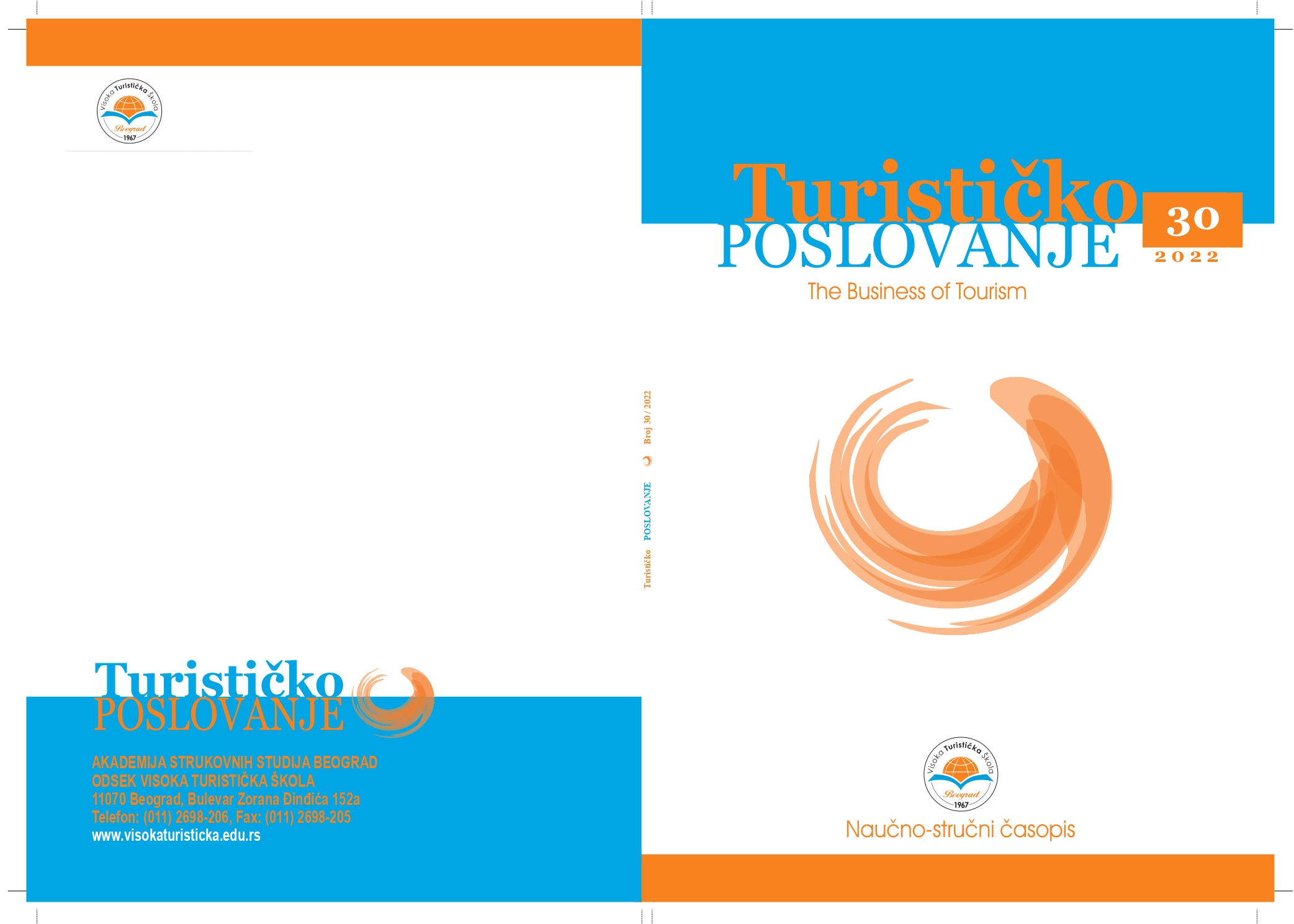CHARACTERISTICS OF TRADITIONAL FOOD PRODUCTS AS A PREDICTOR OF CONSUMPTION IN HOSPITALITY - ON THE EXAMPLE OF SELECTED AREAS IN VOJVODINA
Abstract
Traditional food products are an important part of catering and touristic offer. They have an impact on the representation of certain country or region to the consumers. Improvement and increasing of traditional food products consumption and their availability in catering establishments, can have multiple effect on number of other industries, and mostly on producers who belong to small or medium group producers. The topic of this paper consists of traditional food products, i.e. the importance of their characteristics as seen from the point of view of managers in catering establishments in Srem and Northern Bačka.The main task is to present their attitudes towards quality of traditional products (market, production and technical) which affect the purchase decision. The main aim of this paper is to collect data about traditional food products which are used in meal preparation in catering establishments in the area and whose traits are essential for their choice.
References
· Almli, V.L., Verbeke, W., Vanhonacker, F., Næs, T., Hersleth, M. (2011). General image and attribute perceptions of traditional food in six european countries. Food Quality Preference 22 (1), 129_138.
· Anders, S.M., Caswell, J.A., (2009). The benefits and costs of proliferation of geographical labeling for developing countries. The Estey Centre Journal of International Law and Trade Policy 10 (1), 77-93
· Aprile, M.C.; Caputo, V.; Nayga Jr, R.M. (2012). Consumers' valuation of food quality labels: the case of the European geographic indication and organic farming labels. International Journal of Consumer Studies, 36, 158-165.
· Anastasiadis, F.; Apostolidou, I.; Michailidis, A. (2021). Food traceability: a consumer-centric supply chain approach on sustainable tomato. Foods, 10, 543.
· Caputo, V., Sacchi, G., Lagoudakis, A. (2018). Traditional Food Products and Consumer Choices: A Review. In Case Studies in the Traditional Food Sector; Cavicchi, A., Santini, C., Eds.; Woodhead Publishing: Sawston, UK.
· Cayot, N. (2007). Sensory quality of traditional foods. Food Chemistry, 101(1), 154–162.
· Chambers IV, E. (2019). Analysis of sensory properties in foods: A special issue. Foods, 8, 291
· Curtis, K.R.; Cowee, M. W. (2009). Direct marketing local food to chefs: Chef preferences and perceived obstacles. Journal of food distribution research, 40, 26-36.
· Dević-Blanuša J.; Kalenjuk B.; Gagić S. (2017). Organic food in the hospitality industry: Supply and demand. Zbornik radova Departmana za geografiju, turizam i hotelijerstvo, 46, 89-95.
· Escobar-López, S.Y.; Espinoza-Ortega, A.; Vizcarra-Bordi, I.; Thomé-Ortiz, H. (2017). The consumer of food products in organic markets of central Mexico. British Food Journal, 119, 558-574.
· Frash Jr, R.E.; DiPietro, R.; Smith, W. (2015). Pay more for McLocal? Examining motivators for willingness to pay for local food in a chain restaurant setting. Journal of Hospitality Marketing & Management, 24, 411-434
· Fusté-Forné, F. (2019). Seasonality in food tourism: wild foods in peripheral areas. Tourism Geographies, 1-21.
· Gellynck, X.; Kühne, B. (2010). Horizontal and vertical networks for innovation in the traditional food sector. International Journal on Food System Dynamics. 2010, 1, 123 132.
· Groves, A.M. (2001). Authentic British food products: A review of consumer perceptions. International Journal of Consumer Studies, 25, 246-254.
· Grubor, B., Kalenjuk Pivarski, B.,Ðerčan, B.,Tešanović, D.,Banjac, M.,Lukić, T.;,Živković, M.B., Udovičić, D.I., Šmugović, S., Ivanović, V., Ćirić, M., Ćirić, I. (2022). Traditional and Authentic Food of Ethnic Groups of Vojvodina (Northern Serbia)— Preservation and Potential for Tourism Development. Sustainability, 14, 1805.https://doi.org/10.3390/su14031805.
· Guerrero, L.; Guardia, M.D.; Xicola, J.; Verbeke, W.; Vanhonacker, F.; Zakowska, S., et al. (2009). Consumer-driven definition of traditional food products and innovation in traditional foods. A qualitative cross-cultural study. Appetite, 52, 345–354
· Gupta, K.B. Consumer behaviour for food products in India. In 19th Annual World Symposium of the Indian Institute of Management, Bombay, India, June 2009, 20-21.
· Kalenjuk, B.; Cvetković, B.; Dević-Blanuša, J. (2017). Autentična hrana ruralnih područja Vojvodine i značaj za razvoj gastronomskog turizma. Turističko poslovanje, 20, 27-35.
· Kalenjuk B.; Grubor B.; Đerčan B.; Ivanović V. (2022). Independent food production as immediate gastronomical authenticity of the region of importance for the development of tourism in Vojvodina. Turističko poslovanje, 29, 61-72.
· Nijssen, E.J.; Van Trijp, H.C. (1998). Branding fresh food products: exploratory empirical evidence from the Netherlands. European review of agricultural economics. 1998, 25, 228-242.
· Tsai, C.T., Wang, Y.C. (2017). Experiential value in branding food tourism. J. Destin. Mark. Manag. 6, 56–65.
· Urry, J. (1990). The Tourist Gaze: Leisure and Travel in Contemporary Societies. Sage,London.

